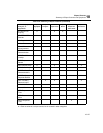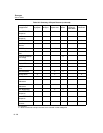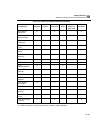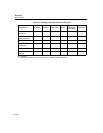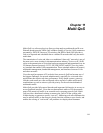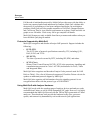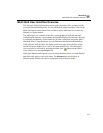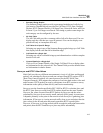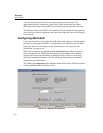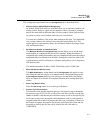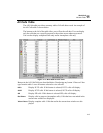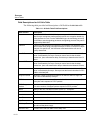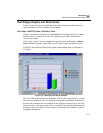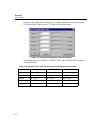
11-5
Multi-QoS
Multi-QoS User Interface Overview
11
• Summary Range Graphs
The Summary Range graphs provide a percentage breakdown of calls by key
QoS metrics. Breakdowns are provided for Call Jitter, RTCP Jitter, Dropped
Packets, RTCP Dropped Packets, Call Setup Time, Network R-factor, and User
R-factor. Up to five ranges are allowed. The timing or packet-count ranges for
each category can be configured by the user.
•
All Calls Table
The All Calls table provides a summary table of all calls discovered. You can
display only the calls that use a specific protocol. You can also display com-
pleted calls only or incomplete calls only.
•
Call Tables for a Specific Range
Selecting any range in any of the Summary Range graphs brings up a Call Table
that displays all the calls that fall within that range.
•
Call Details for a Single Call
Selecting any call in a call table brings up an information box with the complete
details for the call.
•
Channel Details for a Single Call
Click on View Channel Details of the Single Call Detail View to display chan-
nel information for the selected call. The Channel Table provides detailed chan-
nel information in tabular format.
Surveyor and RTCP Jitter Values
Multi-QoS provides two different measurements (views) of call jitter and dropped
packets, one calculated by Surveyor and one extracted from RTCP packets. RTCP
(Real-Time Control Protocol) is a control protocol for the RTP (Real-Time
Transport Protocol). RTP supports the transport of real-time data such as video and
audio streams. RTCP packets are sent by participants in an RTP session to convey
information on the quality of data delivery and session membership.
Surveyor uses the formula specified in RFC 1889 for RTCP to calculate jitter, and
the RTCP jitter Surveyor reads from RTCP packets should use the same formula.
However, the values extracted from RTCP packets by Surveyor and the values
calculated by Surveyor do not exactly match, and may differ greatly in some cases.
It depends primarily on the point in the network where Surveyor is gathering jitter
information. If Surveyor is viewing network traffic close to one end point, then the
jitter values for the far end point may nearly match the RTCP-reported jitter.
However, if Surveyor is viewing network traffic towards the mid-point between the
end points, then the RTCP and Surveyor jitter may differ substantially.



